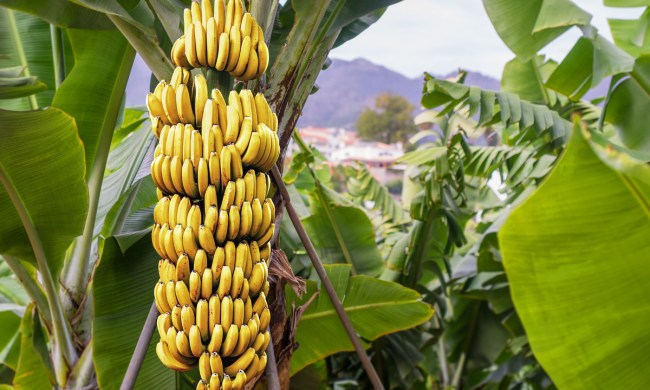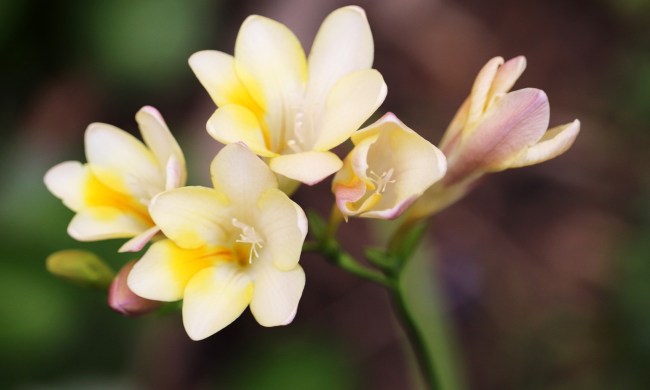Trees are incredible plants with many fantastic benefits. Their roots keep the soil from washing away, they provide food and shelter for people and animals, and they are particularly good at absorbing carbon dioxide. If you want to plant a tree in your yard for one or more of these benefits, one of your options is to plant a hickory tree. Hickory trees are lovely, they’re fairly easy to grow, and there are several excellent species you can choose from. Here’s what you need to know to get started.
Why should you grow hickory trees?

Hickory trees offer the benefits that most trees do, such as preventing soil erosion and absorbing CO2, but there are a few additional benefits that are good to know. Hickory nuts are a great food source for wildlife during fall and winter, and you can eat them, too. Aside from bitternut hickory trees, which, true to their name, produce incredibly bitter nuts, hickory nuts are described as rich, sweet, and similar to pecans. This is actually because pecan trees are in the hickory family.
The wood is useful as well. While growing your own trees for lumber is not cost effective, you can still use the wood if the tree is knocked down. Hickory wood is considered quite durable, so it is often used to make things of frequent use, like handles, cabinet doors, and floors. Fallen or pruned limbs can also be useful, either to make smaller objects or as an addition to grills or fire pits.
Planting hickory trees

Hickory trees can grow from seed, but most people start them as saplings to speed up the process. If you decide to start with a seed, avoid buying hickory nuts from grocery stores, as these are sometimes boiled or treated with a preservative to stop them from sprouting. This is great if you’re buying hickory nuts to snack on, since you won’t need to worry about them growing in your cabinet, but it stops them from growing in your garden as well. Hickory seeds need to be exposed to cold and moisture before they can germinate, and while you can simulate this in your refrigerator, the simplest solution is to plant them in the fall and let winter do the work for you.
You should plant saplings in the spring after the last frost has passed. Start by preparing your planting site. Choose an area with plenty of room in all directions, including down. Avoid planting them near structures, including driveways — you don’t want hickory nuts falling onto your car. Rich and well-draining soil is ideal, but hickory trees can tolerate most soil types as long as it has decent drainage. Hickory trees can be planted in full sun to partial shade.
Once you decide on your planting site, remove the sapling from the container or bag it came in, gently removing excess soil from its roots. Dig a hole deep enough to fit the roots, so that the top of the roots is at or just above the soil’s surface. The hole should be twice as wide to increase stability. Place your sapling in the hole and fill the soil in around it, alternating sides to keep the tree stable and upright.
Hickory tree care

Hickory trees require little care once mature, but seedlings and saplings appreciate some help in getting started. If you live in an area with strong winds, protect saplings with a temporary wind barrier. Young trees need regular watering, and adding a layer of mulch around the base of your hickory tree helps improve water retention. Leaf mulch, in particular, is a good choice for your hickory tree. In later years, you can even use its own leaves as mulch for it.
Pruning is essential for keeping your tree healthy and neat, but it’s easy to overdo it with hickory trees. They grow quite slowly, which means it takes a while for them to recover from larger prunings. Stick to removing branches that are damaged, diseased, or are likely to become damaged (such as branches that are rubbing together or are growing too close to a structure). The best time to prune your hickory tree is in late winter or early spring. A balanced or nitrogen-rich fertilizer in spring promotes strong, healthy growth. If leaf mulch is your mulch of choice, you can mix it into the soil when the leaves begin to break down for a boost of nitrogen and other nutrients.
Like many other plants, hickory trees can develop powdery mildew. If caught early, this fungal infection is easy to treat, so check your tree regularly for signs of developing problems. The primary pest to look out for is the hickory bark beetle, which bores holes into hickory trees and can cause major damage. The best preventative measure is to keep your tree healthy, as they tend to target sick or weak trees. Once they infest the tree, pesticides may be able to prevent further damage.
From delicious nuts to beautiful furniture, hickory trees serve many important roles. Even if you’re only interested in hickory trees for their ornamental qualities, these wonderful trees have plenty to offer. They’re slow-growing trees, so it takes patience to grow them, but they are well worth the time and effort.




